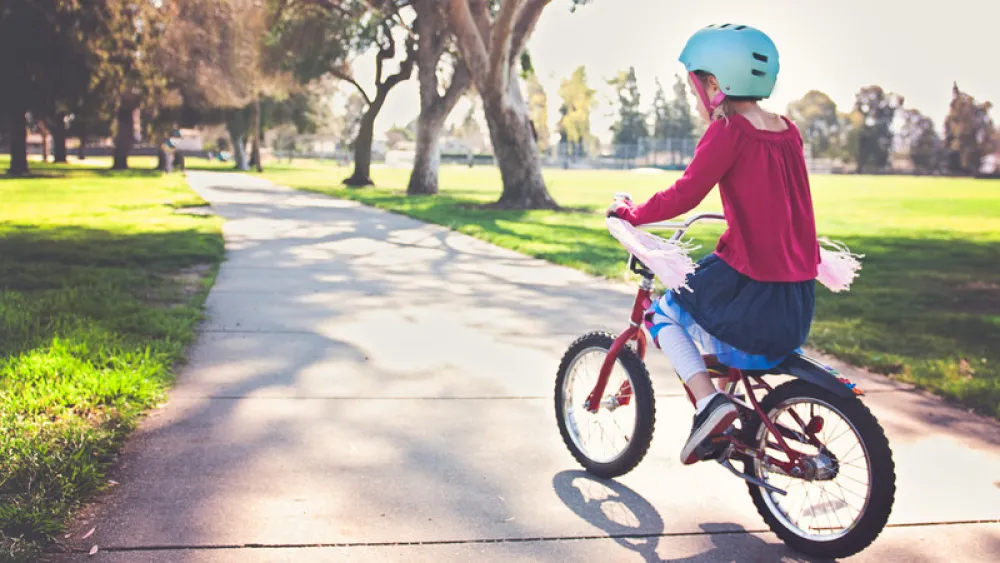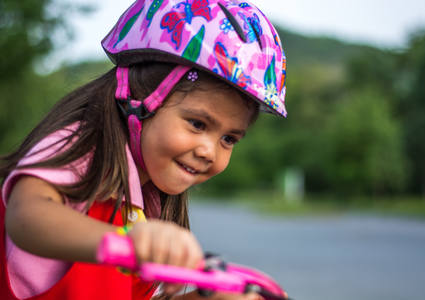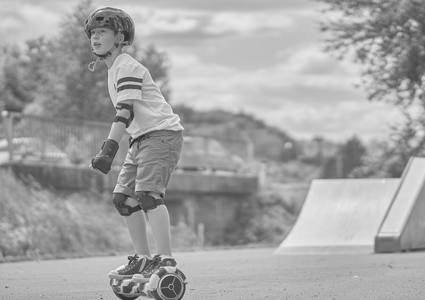




Family Health
Helmets a Smart Defense against Head Injuries


Marty McFly may have not worn a helmet when he rode his hoverboard in Back to the Future, but your child should. And helmets aren’t just for hoverboards. Your child should have one…
… when he rides a bike
… roller skates
… rides a scooter
… or a ripstick
… and basically rides anything with wheels.
 Start young
Start young
My advice: “If it has wheels, a child should wear a helmet.”
Start at the very beginning. If your child starts to ride a tricycle or a big wheel at age 2-3, introduce the helmet. If you bike and have a bike carrier, put a helmet on your child.
I sometimes hear parents say, ”It’s only in the backyard or in front of the house. They don’t go too fast.”
But I know children. Once they get the hang of pedaling, they are going to go fast, because it is fun to go fast. Going fast is when accidents can happen.
Why wear a helmet?
A recent study by Nationwide Children's Hospital showed more than 2.2 million American children a year – that’s about 25 children every hour – were treated in emergency departments for bicycle-related injuries. Children who were not wearing a helmet when they were injured were most likely to sustain traumatic brain injuries and be hospitalized.
 Good helmet guidelines
Good helmet guidelines
The best way to prevent head injury is with a well-fitted helmet that is certified by the U.S. Consumer Product Safety Commission.
- The helmet straps should form a V around the ears.
- The chin strap should be snug, but the child should be able to fully open his mouth.
- There should be a space about the width of two fingers between the eyebrows and the edge of the helmet. This should help to protect the front of the head and not obstruct the child’s view.
Basic rules of riding
Once your child has an appropriately fitting bike helmet, teach the rules of the road:
- Use sidewalks or bike trails when available and avoid the street.
- If riding on the street, ride on the right side of the road with traffic.
- Use appropriate hand signals for turns.
- Obey the rules of the road.
- Make other bikers aware of your presence.
 A special note about hoverboards
A special note about hoverboards
More than 26,000 kids in the U.S. were treated for hoverboard injuries in 2015-2016, the advent of the hoverboard (self-balancing scooter). The body parts most frequently injured were the wrist, the forearm and head. Most hoverboard injuries occurred at home. The American Academy of Pediatrics (AAP) recommends if a child is going to ride a hoverboard, whether it’s on the sidewalk or at home, he should wear a helmet and wrist guards.
Keep your kids safe when they are on wheels. Make helmets a priority in your home.


